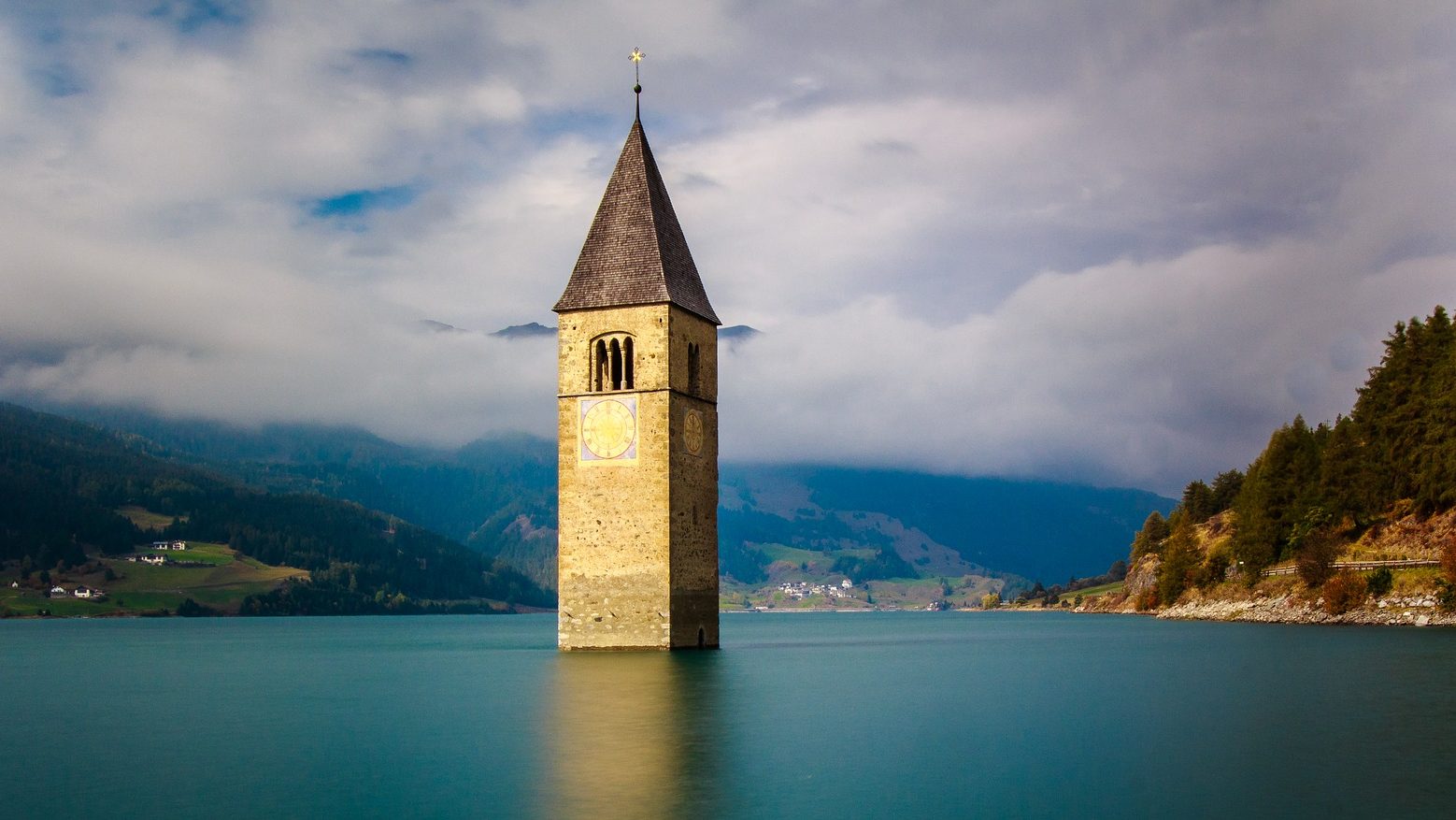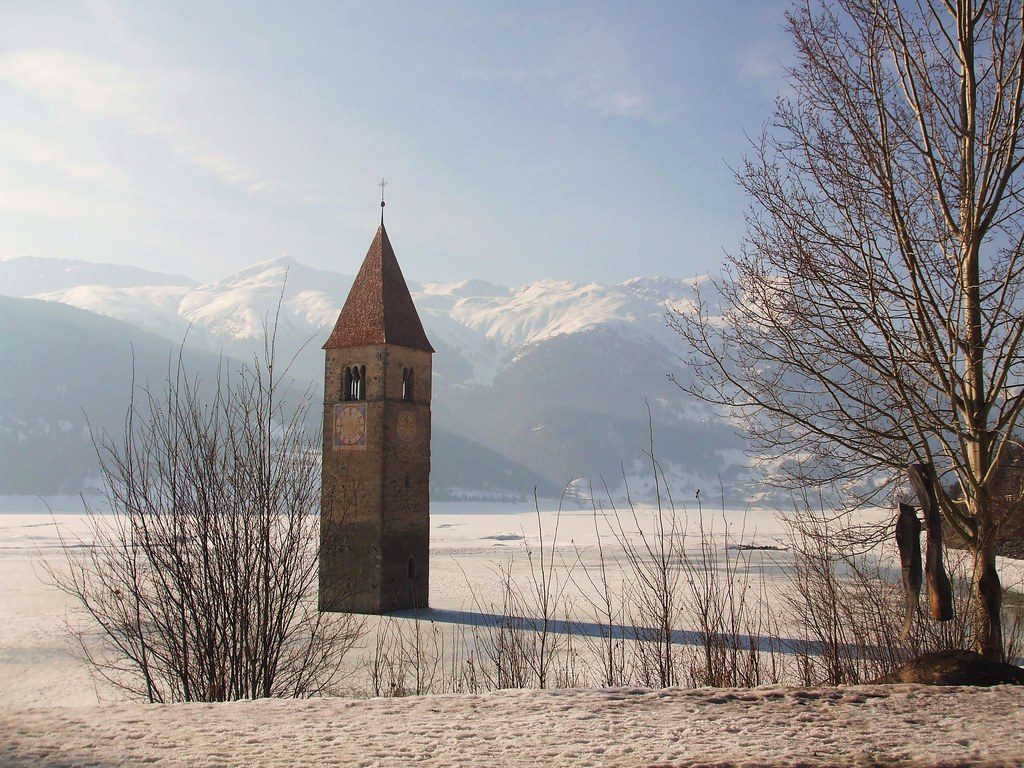It peeps out of the water, rising to the sky. He peeks curiously around him from the arches of his belfry. It is located in Vinschgau and it is totally surrounded by the blue of the Resia lake. It is the submerged bell tower which, in its solitude, attracts the admiring glances of numerous tourists. So unique that the German travel magazine Geo listed it among the 15 places that seem straight out of a fairytale. But his is not a pink and white story.
A sad story
If the sight of the bell tower leaves us amazed, arousing a feeling between the curious and the amused, the spirit that explains its origin is different. The story that leads the bell tower to acquire its present appearance is not at all happy. It was 1950 when the construction of a new dam for the production of electric energy. A project that has been abandoned and taken up several times and that sees its beginnings already at the end of the 800th century. The goal is to create an artificial basin that should have taken place in full respect of the surrounding villages. Yet things turned out differently.
In 1920 the raising of the water level to 5 meters was approved. Then, in 1939, the state approved the construction of a dam that would allow water stagnation of up to 22 meters. Clear that the inhabitants of the neighboring municipalities of Curon and Resia did not digest it and tried in every way to oppose it. Even the parish priest of the town took the front line, even asking for the support of the then Pope Pius XIII. Every effort was in vain. In 1947 work began which, after three years, marked the end for the nearby settlements. The shutdown of the locks caused the water to rise. The surrounding villages remained flooded. "The water rises fearfully". With these words, published in the 1950 newspaper, an inhabitant took leave of Curon Vecchia.
What remains of the submerged bell tower today?
How to resolve the disastrous situation caused by man's "ingenuity"? Immediately after the damage, which saw 677 hectares of land devoured by water, the population was evacuated. Arranged in temporary barracks, at the beginning of Vallelunga, the former inhabitants witnessed the loss of their dearest things in disbelief. Houses, fields and farms. All blown away. A real theft of the existence of these people, half of which felt forced to emigrate. Among the buildings literally eaten by the dam, there are also goods of social interest. The church is an example of this. Today we only see the submerged bell tower. Built during the fourteenth century, it shows a Romanesque style. Next to it was the nineteenth-century church of which no trace remains. In fact, it must be said that all the constructions incorporated by the water no longer exist. A large explosion cleared the lake floor in the summer of 1950.
The bell tower therefore should not at all stimulate admired and happy feelings. On the contrary, it should be looked at for its solitary appearance. Nostalgic witness of what was there. However, the emotional charge, whatever it may be, that moves in the many tourists visiting the area remains evident. An effect extended by seasonality. In summer the bell tower "comes alive" thanks to the numerous surfers and sailors who fill the waters and the sky with puffy and colorful sails. During the winter the bell tower is transformed into something magical. Thanks to the snow-covered landscape, the lake becomes white giving greater singularity to the only "inhabitant" of the place. The bell tower submerged in a soft white blanket. And as usual, legends flourish. Among these, the one that tells the possibility of hearing, in particular days of the year, the tolling of the bells. As if it were the voice of the bell tower that has echoed from times past to tell us the unusual story still today.







